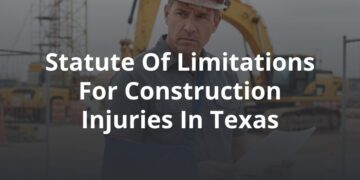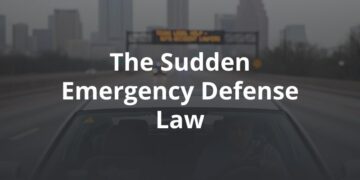Evidence of Austin’s unprecedented growth is everywhere: in our real estate market, where a shortage of new homes is driving up prices as the city struggles to house new residents; in our economy, which currently ranks number two for job growth in the US; and, perhaps most obviously, in our skyline, which may soon be home to 20 new skyscrapers. That includes a planned 66-story mixed-use building that will be Austin’s tallest skyscraper yet.
At the end of last year, Austin was ranked the fastest growing large city in the country. In 2017 Austin welcomed 55,269 new residents into its city limits, with a net migration number — the amount of new residents who moved here rather than being born here — at 105 new people a day.
All that growth has been great for our economy and job market. Needless to say, however, it has also come with some unintentional negative consequences — namely, higher traffic volume, which has put strain on our roadways, including local stretches of highway like the Travis County portion of I-35. When combined with the presence of large commercial vehicles, that increased congestion can become a recipe for disaster. FVF investigated the correlation between Austin’s population growth and 18-wheeler accidents and found the following insights.
The I-35 Corridor Is a Hotbed for Accidents
The Texas section of I-35 is notorious for dangerous collisions; one study named 11 sections of this highway in its list of the 78 deadliest stretches of road in Texas. That includes the large swath of I-35 that spans the length of Austin.
Adding to the problem, Austin’s growth spurt has put more vehicles on that section of I-35 than ever before. According to the Texas A&M Transportation Institute, approximately 220,000 vehicles travel Austin’s stretch of I-35 every day. Local commuters and intercity travelers comprise around 86 percent of that traffic. By comparison, commercial trucks average around 1 percent of daily I-35 traffic.
Essentially, more locals than interstate travelers are choosing to take I-35. That fact has increased congestion on the highway — and added traffic often correlates with an increase in accidents. For instance, when the Maryland State Highway Administration reviewed existing traffic studies, they found that accident frequency, rate, and severity are all tied to traffic volume levels. In other words, the more people on the roads, the more dangerous those roads become.
Where do commercial vehicles factor into all of this? Large trucks including 18-wheelers and tractor-trailers are obviously more likely to be found on interstates than on local roads. For example, the same Texas A&M study found a much lower volume of commercial truck drivers on alternative routes, such as SH-130. When those drivers are placed into the highly congested conditions on I-35, that can have very deadly results.
Large Truck Accidents Spell Danger for Passenger Vehicles
When large trucks and passenger vehicles collide, the latter almost always bears the brunt of the damage. Commercial trucks tend to weigh 20 to 30 times more than passenger vehicles, and they require a 20 to 40 percent greater braking distance in order to come to a complete stop.
Those factors combine to create a high fatality rate for 18-wheeler crashes. Of the 4,102 large truck fatalities in the US in 2017, 68 percent of those killed were passenger vehicle occupants, compared to 17 percent who were truck operators (another 14 percent were from pedestrians, motorcyclists, and bicyclists).
Additionally, large truck crashes are on the rise. According to the Federal Motor Carrier Safety Administration (FMCSA), the per-capita volume of fatal truck crashes rose 13 percent between 2010 and 2016. Almost a third of those accidents happened on interstate highways like I-35.
Several Fatal Accidents in 2018 Involved Large Commercial Truck
According to data from the Austin Police Department, in 2018, 18-wheelers were involved in several fatal accidents in Austin. Some of these cases were anomalies, such as the fatality that occurred when a suspect evading arrest on foot crossed the highway and ran into the rear portion of an 18-wheeler. Others were more typical: a collision between an Infiniti G35 and an 18-wheeler that left the passenger vehicle driver dead, while the 18-wheeler driver sustained only non-life-threatening injuries. Or the fatality that occurred on I-35 when a speeding Toyota Avalon driver struck a stopped Freightliner truck. Again, it was the passenger vehicle driver who succumbed to injuries in that case.
That’s only looking at traffic fatalities, however. There were also several cases of overturned 18-wheelers last year, which occurred when drivers lost control of their vehicles.
Commercial driving conditions often contribute to large vehicle accidents like these. Drivers may be unfamiliar with roads, fatigued, or speeding to get to their destination faster. However, according to FMCSA’s Report to Congress on the Large Truck Crash Causation Study, interruptions to the flow of traffic — the aftermath of a previous crash, work zones, or rush hour congestion — were a contributing factor in 25 percent of all large vehicle crashes.
The bottom line is that high traffic volume can increase accidents involving 18-wheelers, particularly when drivers, commercial or otherwise, participate in negligent behavior. If you have been the victim of a similar situation — or any motor vehicle accident — contact our firm today to see what one of our personal injury experts can do to help your case. We will make sure that responsible parties and their insurance providers are held accountable for their actions.






